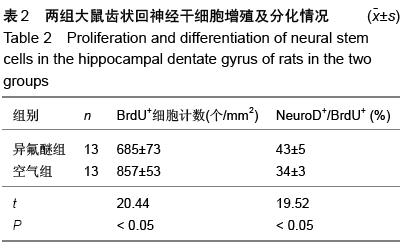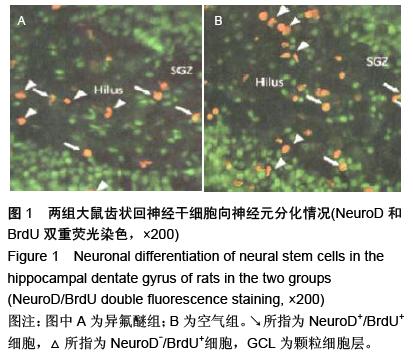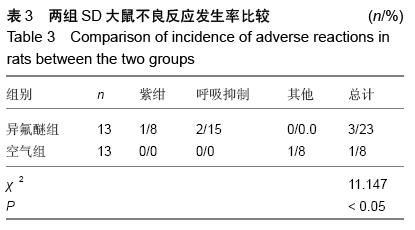| [1] 尹翠,缑灵山,孙凌燕,等.异丙酚麻醉对新生小鼠海马c-fos表达和caspase-3激活的影响[J].中华麻醉学杂志,2011,31(7):884-886.[2] Ishizakia R, Shinbab T, Mugishimaa G,et al.Time-series analysis of sleep–wake stage of rat EEG using time-dependent pattern entropy.Physica A: Statistical Mechanics and its Applications.2008; 387(13):3145-3154.[3] Tung A, Herrera S, Szafran MJ, et al. Effect of sleep deprivation on righting reflex in the rat is partially reversed by administration of adenosine A1 and A2 receptor antagonists. Anesthesiology. 2005;102(6): 1158-1164.[4] Dong HL, Fukuda S, Murata E, et al. Orexins increase cortical acetylcholine release and electroencephalographic activation through orexin-1 receptor in the rat basal forebrain during isoflurane anesthesia.Anesthesiology. 2006;104(5):1023-1032.[5] 杨昶,何林,左友波,等.七氟醚和异氟醚麻醉在腹腔镜手术中对应激反应的影响[J].川北医学院学报,2011,26(1): 38-40.[6] 曾小清.异氟醚麻醉对老年患者术后认知功能的影响[J].医学信息:下旬刊,2011,24(7):203.[7] Wang C, Weihrauch D, Schwabe DA, et al. Extracellular signal-regulated kinases trigger isoflurane preconditioning concomitant with upregulation of hypoxia-inducible factor-1alpha and vascular endothelial growth factor expression in rats.Anesth Analg. 2006;103(2):281-288.[8] Xiong L, Zheng Y, Wu M, et al. Preconditioning with isoflurane produces dose-dependent neuroprotection via activation of adenosine triphosphate-regulated potassium channels after focal cerebral ischemia in rats. Anesth Analg. 2003;96(1):233-237.[9] 黄伟伟.低流量N2O-O2-七氟醚吸入全麻在胸科手术的应用[J].内蒙古中医药,2011,30(3):44-45.[10] 夏淑轩,李玉娟,张静,等.异氟醚和七氟醚对新生大鼠海马细胞增殖及细胞外信号调节激酶1/2表达的影响[J].中华行为医学与脑科学杂志,2013,22(4):299-302.[11] 刘力,闵苏,魏珂.七氟醚和异氟醚对不同浓度罗库溴铵抑制乙酰胆碱受体内向电流的影响[J].中国药理学通报, 2011,27(1):113-116.[12] 徐卉,田玉科,杨辉,等.丙泊酚反馈靶控输注静脉麻醉与异氟醚吸入麻醉的临床效果比较[J].临床麻醉学杂志,2003, 19(7):387-389.[13] 陈贵珍,鲁开智,王恩琴,等.七氟醚与异丙酚对老年人腹部手术术后认知功能的影响[J]. 重庆医学,2010,39(17): 2287-2289.[14] 刘永哲,高明龙,张宏,等. 异氟醚和七氟醚对脑室内注射β-淀粉样蛋白单体的老年大鼠海马内磷酸化JNK P38及tau蛋白的影响[J].中国医药与临床,2009,9(7): 553-556.[15] 辛忠,张健敏.学龄儿童丙泊酚全凭静脉麻醉和七氟醚吸入麻醉与静吸复合麻醉的比较[J].临床麻醉学杂志,2011, 27(3):290-291.[16] Sall JW, Stratmann G, Leong J, et al. Isoflurane inhibits growth but does not cause cell death in hippocampal neural precursor cells grown in culture. Anesthesiology. 2009;110(4):826-833.[17] 张绍东,翟晶,邵新立,等. 异氟烷和七氟烷对缺血神经元的保护及对bcl-2和ICE基因表达的影响[J].中风与神经疾病杂志,2002,19(6):323-325.[18] 赵新京,徐礼鲜,叶平安.异氟醚和安氟醚对大鼠海马神经元自发放电活动的影响[J].西安交通大学学报,2004, 25(1):58-60.[19] 刘志安,赵娓娓,吕春娥,等.NMDAR亚单位1在AD样大鼠海马的表达及其与细胞凋亡的关系[J].中国老年学杂志, 2011,31(2): 273-276.[20] 范隆,薛继秀,王天龙.异氟烷全麻围术期老年患者血清淀粉样蛋白-β(1-40)与锌水平的变化[J].药物不良反应杂志, 2009,11(3):161-164.[21] Holmström A, Akeson J. Desflurane increases intracranial pressure more and sevoflurane less than isoflurane in pigs subjected to intracranial hypertension. J Neurosurg Anesthesiol. 2004;16(2): 136-143.[22] Moloney AM, Griffin RJ, Timmons S, et al. Defects in IGF-1 receptor, insulin receptor and IRS-1/2 in Alzheimer's disease indicate possible resistance to IGF-1 and insulin signalling. Neurobiol Aging. 2010; 31(2):224-243.[23] Petersen KD, Landsfeldt U, Cold GE, et al. Intracranial pressure and cerebral hemodynamic in patients with cerebral tumors: a randomized prospective study of patients subjected to craniotomy in propofol-fentanyl, isoflurane-fentanyl, or sevoflurane-fentanyl anesthesia. Anesthesiology. 2003;98(2):329-336.[24] 张玲美. 七氟醚和氨氟醚低流量麻醉在临床麻醉应用中的副作用比较[J].中国医药导报,2011,8(33):88-89.[25] 向强,陈映红,陈罡,等.细胞实验时异氟醚鼓泡给药法的可靠性[J].中华麻醉学杂志,2008,28(12):1074-1077.[26] Kolbitsch C, Lorenz IH, Hörmann C, et al. Sevoflurane and nitrous oxide increase regional cerebral blood flow (rCBF) and regional cerebral blood volume (rCBV) in a drug-specific manner in human volunteers. Magn Reson Imaging. 2001;19(10):1253-1260.[27] 韩雪,胡楚文,李玉娟,等.右旋美托咪啶通过Akt/Bad通路抑制异氟醚引起的新生大鼠海马细胞凋亡[J].中国药理学通报,2013,29(12):1702-1706.[28] Wakeman D, Guo J, Santos JA, et al. p38 MAPK regulates Bax activity and apoptosis in enterocytes at baseline and after intestinal resection.Am J Physiol Gastrointest Liver Physiol. 2012;302(9):G997-1005.[29] 吴新民,邓小明,黄文起.七氟醚用于成人全身吸入麻醉的随机、开放、多中心、阳性对照临床研究[J].临床麻醉学杂志,2007,23(9):709-711.[30] 陈书萍,骆州富,周媛媛.七氟醚和异氟醚低流量麻醉用于腹腔镜手术的比较[J].当代医学,2009,15(30):155-156.[31] Li YJ,Liu CL,Wang F,et al.Different Effects of Isoflurane and Sevoflurane on Apoptosis of Cortical Neuron and Expression of Akt and Bcl-xl/Bad in Neonatal Rats. Journal of Sun Yat-Sen University(Medical Sciences). 2011;32(3): 291-296.[32] Sanchez V, Feinstein SD, Lunardi N, et al. General Anesthesia Causes Long-term Impairment of Mitochondrial Morphogenesis and Synaptic Transmission in Developing Rat Brain. Anesthesiology. 2011;115(5):992-1002.[33] 蒋海斌,张铁峰,李颖.七氟醚与异丙酚麻醉对先心病患儿心肌氧化应激的影响[J].心脏杂志,2015,15(1):83-84.[34] Ganeshan VR, Schor NF. p75 neurotrophin receptor and fenretinide-induced signaling in neuroblastoma. Cancer Chemother Pharmacol. 2014;73(2):271-279.[35] 张培俊.七氟醚麻醉诱导在患儿全身麻醉中的使用[J].中国医药指南,2014,12(17):38-39.[36] Li ZQ, Rong XY, Liu YJ, et al. Activation of the canonical nuclear factor-κB pathway is involved in isoflurane-induced hippocampal interleukin-1β elevation and the resultant cognitive deficits in aged rats. Biochem Biophys Res Commun. 2013;438(4):628-634.[37] 谢海辉,李知平,张曙,等. 依达拉奉联合肢体远隔缺血后处理对大鼠心肌缺血-再灌注损伤的影响[J].临床麻醉学杂志,2015,31(2):174-176.[38] 白延丽,沈途,刘国利,等.糖原合成激酶3β抑制剂增强异氟醚后处理对心肌缺血-再灌注损伤的保护作用[J].临床麻醉学杂志,2012,28(10):1010-1012.[39] 贺志飚,彭再梅,金丽艳,等.吗啡预处理对大鼠缺血再灌注损伤心肌线粒体通透性转换孔的影响[J].中南大学学报:医学版,2010,35(8):800-806.[40] 牟传琳,杨琳,王雅楠,等.系统护理干预联合连续股神经阻滞镇痛对老年全膝关节置换患者术后心理状况、生活质量及康复功能的影响[J].中国医学创新,2015, 12(20):97-100.[41] 方锐,邓迎杰,孟庆才,等.股神经阻滞在全膝人工关节表面置换围手术期多模式镇痛中的应用[J].中国组织工程研究与临床康复,2011,15(43):8027-8030. |
.jpg)




.jpg)